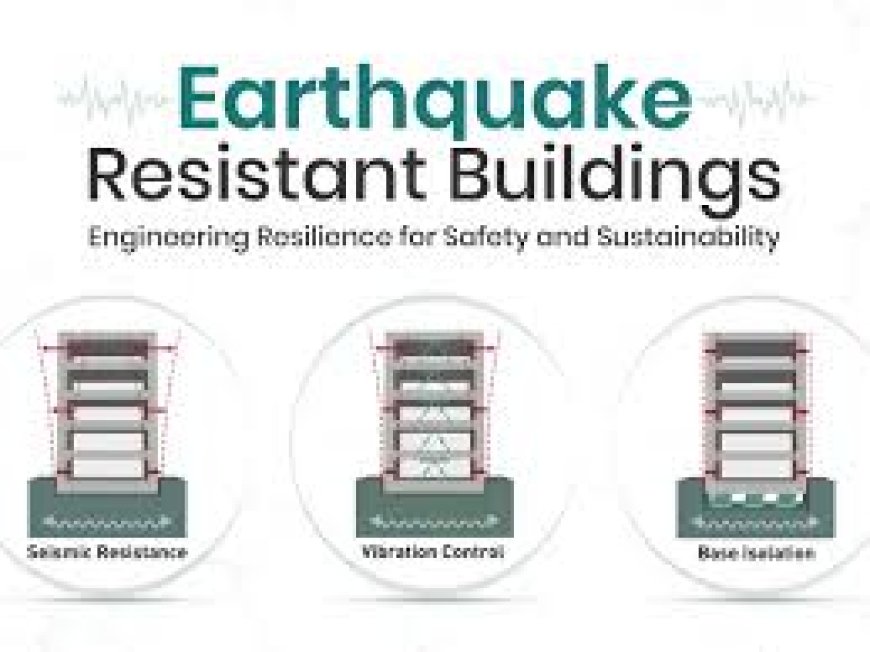Evaluation of Industrial property for earthquake proof construction
When it comes to the industrial real estate market, safety and structural resilience are becoming as important as location and rental yield in today’s dynamic industrial real estate market. Assessment of earthquake-resistant construction is an important step for those investors and developers searching for sale properties in areas that are earthquake-prone.

When it comes to the industrial real estate market, safety and structural resilience are becoming as important as location and rental yield in today’s dynamic industrial real estate market. Assessment of earthquake-resistant construction is an important step for those investors and developers searching for sale properties in areas that are earthquake-prone. Not only does this make occupants safe, but it also prevents long-term investments and caters to rigid insurance and regulatory measures.
This article examines the evaluation of industrial properties for earthquake-proof building, as well as the important role of industrial property management in maintaining structural integrity.
Why Earthquake-Resistant Construction Matters
Natural disasters strike at any point, and earthquakes are the most unpredictable and devastating of them. It is greater for industrial facilities, which usually contain heavy machinery and stored inventory, as well as high-value items that are at a much higher risk due to the specific type of environment. Destruction of the structure or the content may cause:
• Major operational disruptions
• Costly repairs and liability claims
• Safety hazards for employees
• Loss of business continuity
Therefore, industrial property buyers and sellers also need to determine if an industrial building can withstand seismic forces or can be improved to a modern standard.
Things to Consider in Assessing Earthquake-Resistant Industrial Properties
1. Location and Seismic Risk Zone
Long before you even get into inspecting the building, find out the seismic zone in which the property is located. The U.S. Geological Survey (USGS) gives maps that show seismic activity throughout the country. Properties in risky regions such as California, Alaska, or some of the Washington areas must be more compliant with the earthquake-resistant construction codes.
In New Jersey, seismic activity is infrequent but not nonexistent. Seismic evaluations should still not be ignored by the buyers of industrial properties for sale in this region, especially as far as older buildings are concerned, as part of due diligence.
2. Structural Type and Design
The building’s ability to withstand ground motion depends on the building’s framework. When evaluating industrial properties, consider:
• Steel frame structures: Very flexible and more effective absorbers of seismic energy
• Reinforced concrete buildings: Robust but can become brittle without proper reinforcement
• Masonry buildings: A high danger in earthquakes if not retrofitted
Also, ensure that the design has seismic joints, base isolators, or flexible utility connections that enable the building to move without damaging it.
3. Year of construction and compliance with code.
Building codes change with time, particularly after the occurrences of past earthquakes. A property built after major rewrites of the source code (e.g., post-1994 Northridge Earthquake) will have a better chance of satisfying seismic safety requirements. Evaluate:
• The building permit date and codes of construction applied
• Retrofitting history, if any
• Whether the property has recently been audited for structure or not.
In your industrial property management strategy, carry out regular seismic checks to ensure the building remains up-to-date with codes since they may change with time.
4. Foundation and Soil Conditions
Even a structurally good building can get damaged if placed on poor soil. Based on Skoch, soft soils or reclaimed land will increase the seismic waves. Therefore:
• Perform a geotechnical survey and determine the soil types.
• Look for indications of the risk of liquefaction.
Evaluate the depth of the foundation and type of the foundation (e.g., mat foundation vs. pile foundation)
Such awareness is important both when purchasing and when planning for insurance as well as renovations.
The function of industrial property management is to support earthquake preparedness.
Continuing industrial property management contributes vitally to maintaining an earthquake-ready facility. Effective management practices include:
• Regular Inspections: Structural audits and system checks for finding exploitable weaknesses early on.
• Seismic Retrofitting: Upgrading such building components as columns, joints, utility lines, etc.
• Tenant Education: Instruction of occupants in emergency procedures and drilling procedures for evacuation procedures
• Maintenance of Emergency Equipment: Making sure that fire systems, alarms, and emergency exits are equipped and working.
Such measures increase the safety of the tenants and contribute to the preservation of the property value, even after an earthquake.
Insurance Implications for Earthquake-Proof Properties
In case the building shows compliance with seismic safety standards, the insurance in the form of premiums for industrial properties for sale can be notably reduced. Among the properties that have more affordable and readily available earthquake insurance, the following are more likely to have:
• Have undergone a structural audit
• Include recent retrofitting reports
• Comply at least with or even better than the current seismic codes
Buyers should at all times ask for a structural inspection report during due diligence. These documents may be of great use not only for the financing but also for insuring the asset.
Upgrading Older Industrial Buildings
There are many industrial buildings for sale in the market, and they could be even decades old and no longer conform to the current seismic requirements. Although this may translate to a smaller initial cost of purchase, one should consider upgradeability costs. Typical retrofitting solutions include:
• Shear wall reinforcing and steel frame bracing.
• Inclusion of base isolators to absorb the ground motion.
• Extension of flexible joints for pipes and ducts
• Securing of heavy equipment and storage racks.
A structural engineer or a seismic consultant may also be called to assess the feasibility and cost-effectiveness of potential upgrades.
Conclusion: Make Resilience Your Top Priority if You Want to Guarantee Your Investment.
Resilience is the new smart real estate investment currency in the ever-changing world. For any person who is looking for industrial properties for sale, a property that can withstand seismic events should be first on the list, not an afterthought. Through pre-acquisition evaluation or proactive industrial property management, earthquake protection of your asset will provide long-term value, tenant safety, and operational continuity.
Industrial real estate is a big investment. However, in earthquake-prone places, it is not just a question of location and logistics; it is more a question of strength, security, and vision. During this day and age, investing in earthquake-resistant construction may be the choice that keeps your business up and running tomorrow.
Want to have a quick reference on this article for property evaluation? Never mind, I have made a checklist version of the article for you to use during the property evaluations.




























































































































![Are AI Chatbots Replacing Search Engines? AI vs Google [New Research]](https://www.orbitmedia.com/wp-content/uploads/2025/05/How-often-are-we-using-AI-chatbots_.webp)


































